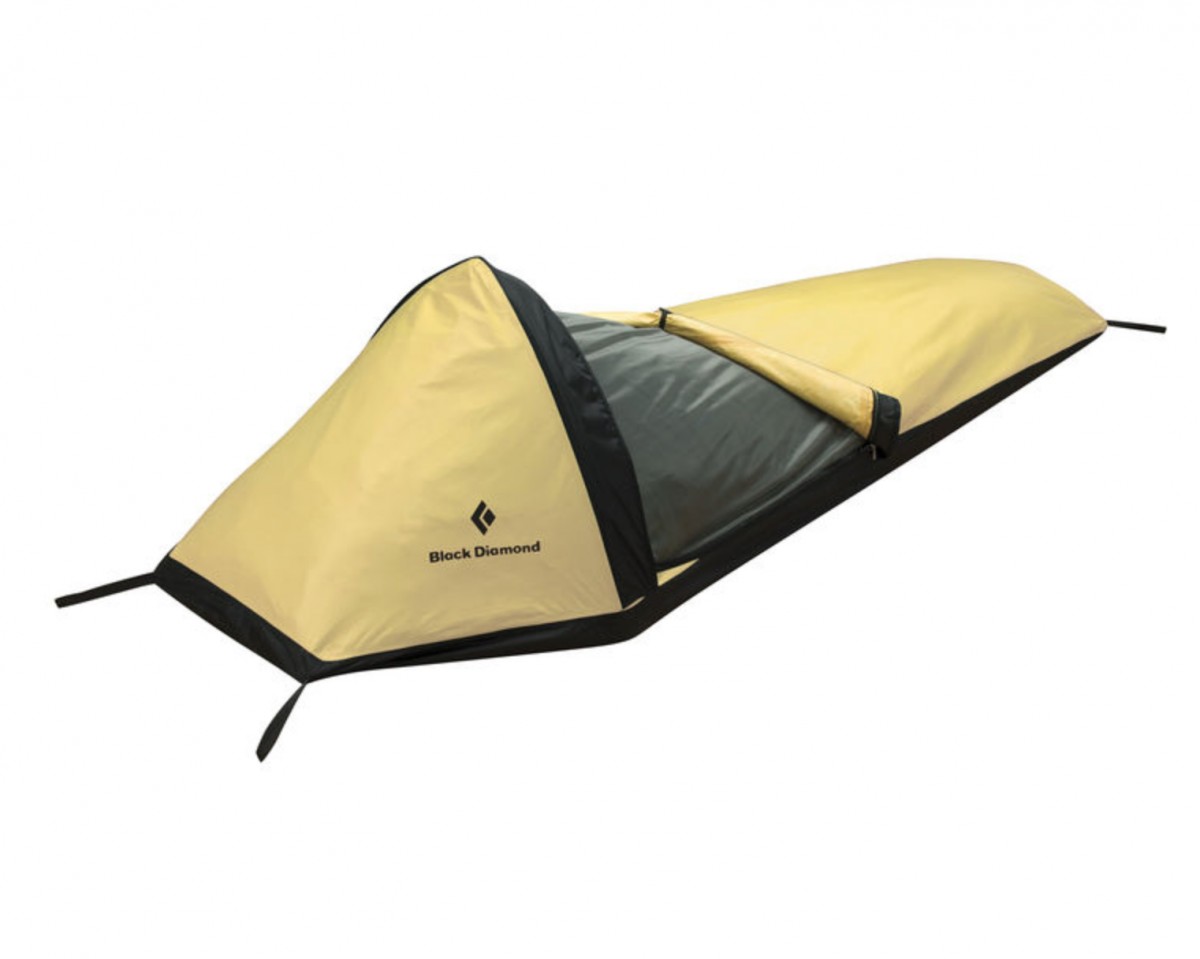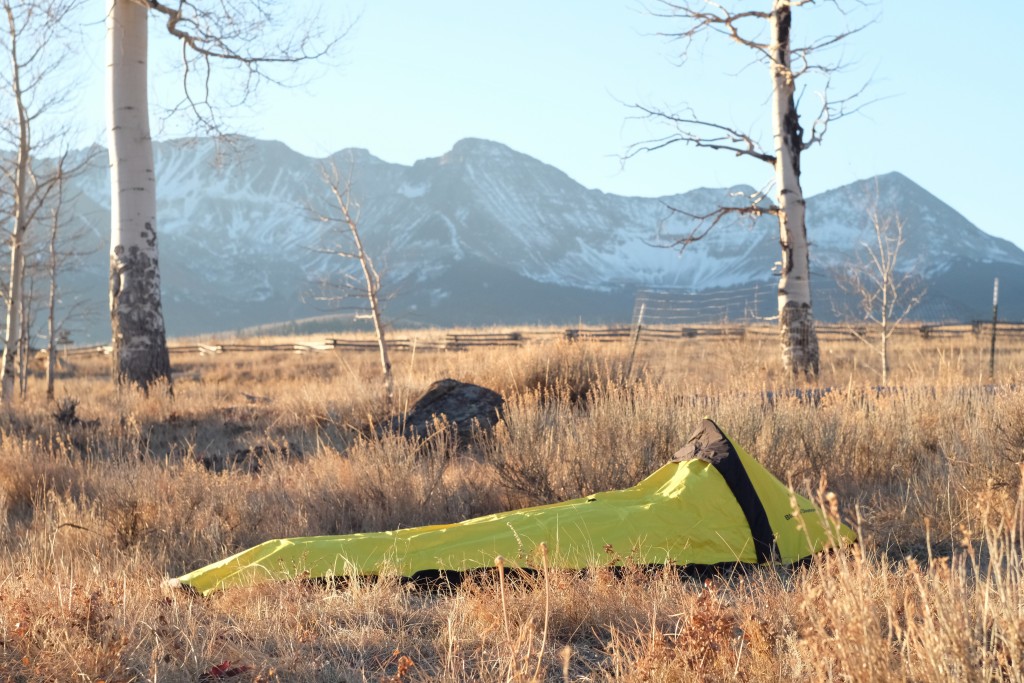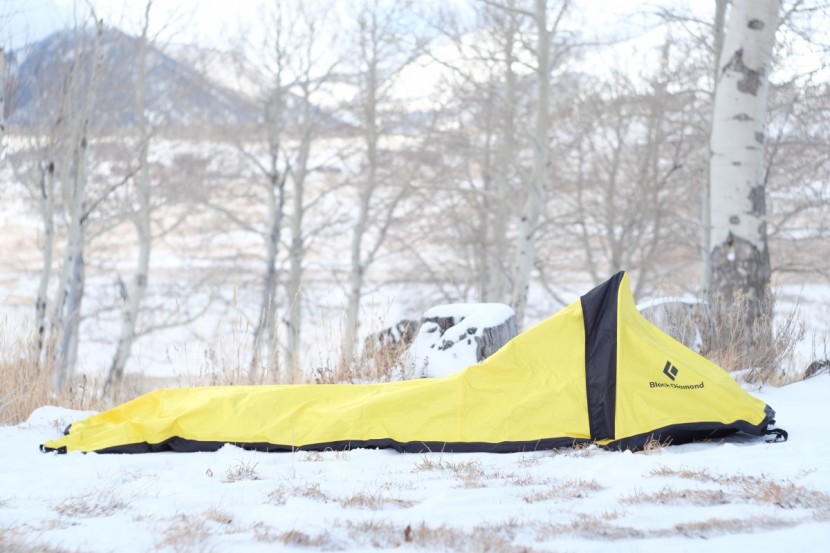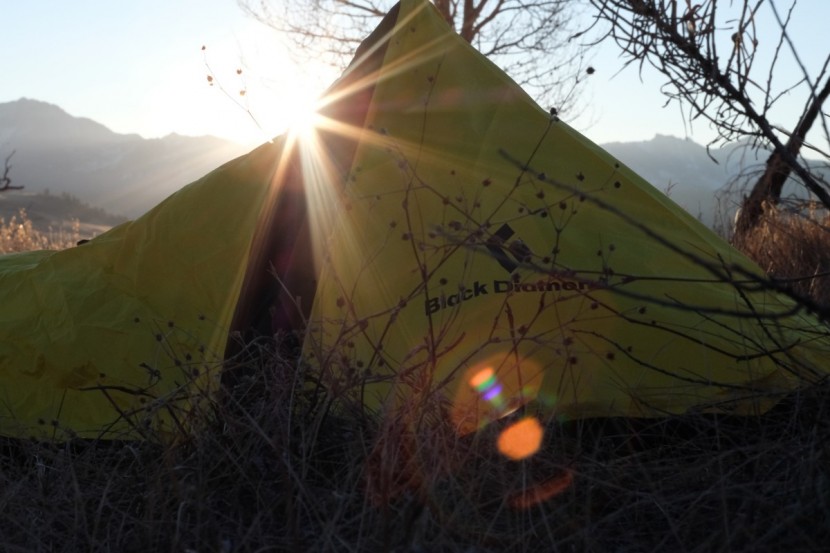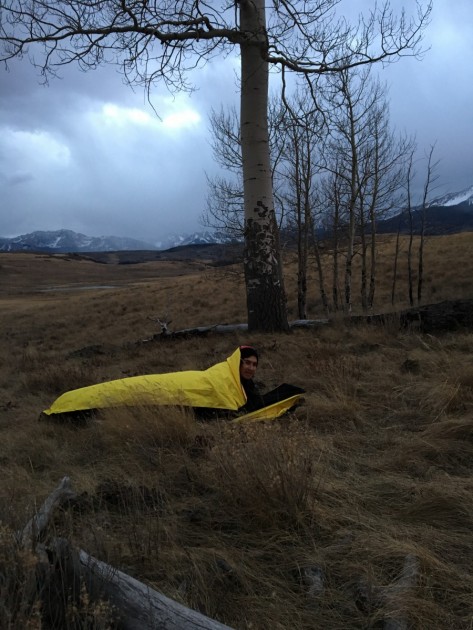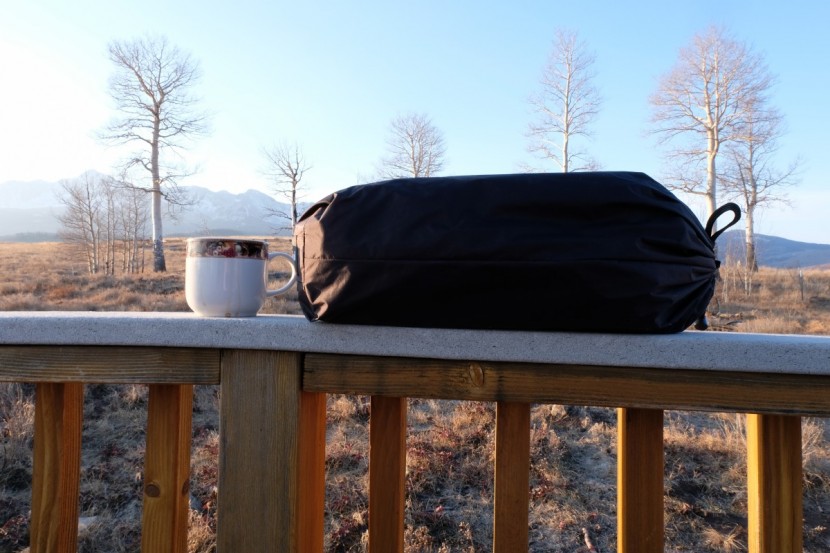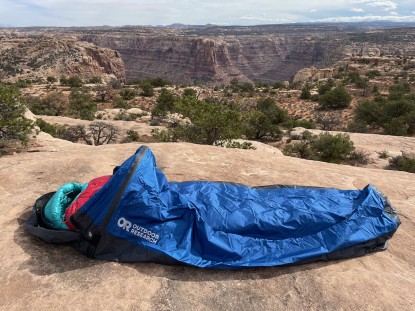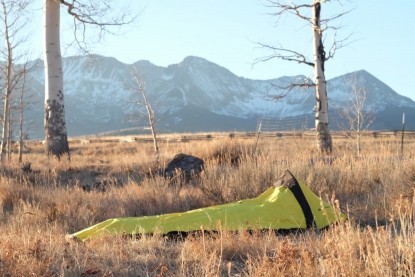Black Diamond Bipod Review
Our Verdict
Our Analysis and Test Results
The Black Diamond Bipod bivy has many noteworthy features. While we didn't find it to be the easiest to pitch or best design for weather protection, it did a pretty good job overall. While it has good weather protection once deployed, it was difficult to set up in a storm without getting moisture inside. Along the same design issue lines, we didn't like that to get the maximum space and usability, the bivy needed to be staked out. Our philosophy is that when taking a bivy sack, we put ourselves in an environment where staking out might not be possible, and we expect our gear to work well regardless.
One of our most significant concerns with this design is that you have to have the inner sanctum of the bivy open and exposed to insert the single pole. This causes two problems. The first is exposing the inside to the elements if you are pitching in a storm, and secondly, the pole fit is exceptionally tight. Because the pole is held in with tension, this process is challenging when wearing gloves. These may seem like nitpicky details, but when thinking about the difficulty of setup, along with the challenge to keep the inside dry under any circumstances, we must be ruthless.
Weather Resistance
Once the Bipod was deployed, we felt safe and sound inside. There was ample space to store extra gear at the head and foot to keep everything out of the elements. The taped seams functioned fantastically, keeping water from creeping through joints and seams between the floor and ceiling of the bivy. On the negative side, the entrance of the bivy requires you to open the top and side of the bivy. This causes problems if you're setting the bivy up during a storm or have to get in and out for any reason.
Weight
Weighing in for the fight at 28.3 ounces, this isn't exactly a boat anchor; it was, however, among the heaviest bivy in our review. For these reasons, we had to bump the BD Bipod down a peg or two.
Comfort
The BD Bipod bivy had ample space inside to accommodate a person and a fair amount of gear. We even had space to read inside the bivy as a storm raged on outside. As one of the bivies in our test that had poles to keep the bivy lofted above the user, it has a huge advantage over the rest of the field as far as comfort.
The extra room to maneuver/toss and turn was appreciated after being crammed in some of the ultralight bivies. The BD Bipod earns high marks for comfort compared to the rest of the field.
Ventilation
Once inside the BD Bipod we found comfort in a variety of temperatures. The massive zippered screen allowed us to dial in the temperature and ventilation. Not only did the massive screen help us dial in the ventilation, but the “ToddTex” material did a decent job keeping us dry when the bivy shell was sealed shut, even in frigid climates, when condensation can be extreme. Ventilating was an issue during rain and snowstorms, however. The screen is on top of the bivy, allowing water in if you unzip during storms; this was a bit of a frustration.
Packability
The BD Bipod is one of the largest packed bivies we tested. While it isn't so big you can't pack it along on your next adventure; it is quite large compared to similarly performing bivies. Overall it wasn't too excessive, but it is getting close to the size of the Black Diamond Firstlight Tent, which is a two-person four-season tent.
Value
This bag is pricey. With other options on the market for much less, it is incredibly hard to justify the value of the BD Bipod. At half its price, the Bipod might be a bit more competitive.
Conclusion
After extensive testing, hiking, skiing, weathering snow, and rainstorms, the Black Diamond Bipod offered decent performance and proved itself to be quite durable. Ultimately, if the price were a bit lower, we would recommend this to a friend venturing out on a backpacking trip in a stable climate.


